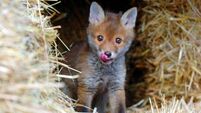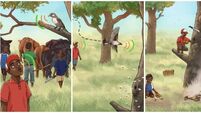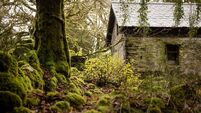Lush hedgerow fruits for punky birds and for us humans
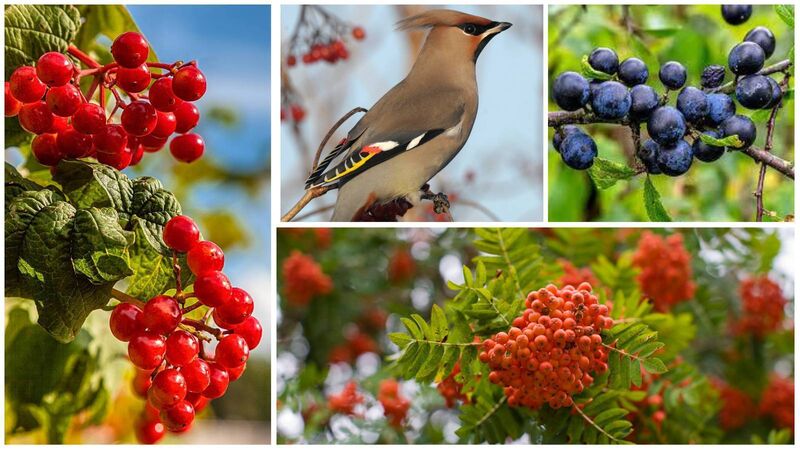
Gueder rose berries, a waxwing, sloes and rowan berries — autumn hedgerows are laden with ripe fruits that attract wildlife. Waxwings come here fro the winter from Scandinavia and have a particular fondness for rowan berries
Now that the days are shortening, the autumn bounty of wild fruit is ripening on the trees and bushes. The autumn equinox is upon us, when night and day are equal, and fruits are the culmination of the growing season. Hedges up and down the county are laden with ripe fruits.
The wispy white flowers that emerged from blackthorn trees in March are now swelling as plump round sloe berries. Hawthorn flowers that erupted from the hedgerows in May are now ripening red haws. Guelder rose, another native fruiting tree that’s often found in hedgerows, produces crimson berries alongside its bright red maple-like leaves. Bright clumps of red and orange rowan berries hang from overhead, surrounded by reddening rowan leaves that will be flaming orange in a few weeks’ time. Wild Spindle fruits are worth looking out for too, their star-shaped berries are a bright candy pink colour, encasing orange seeds.
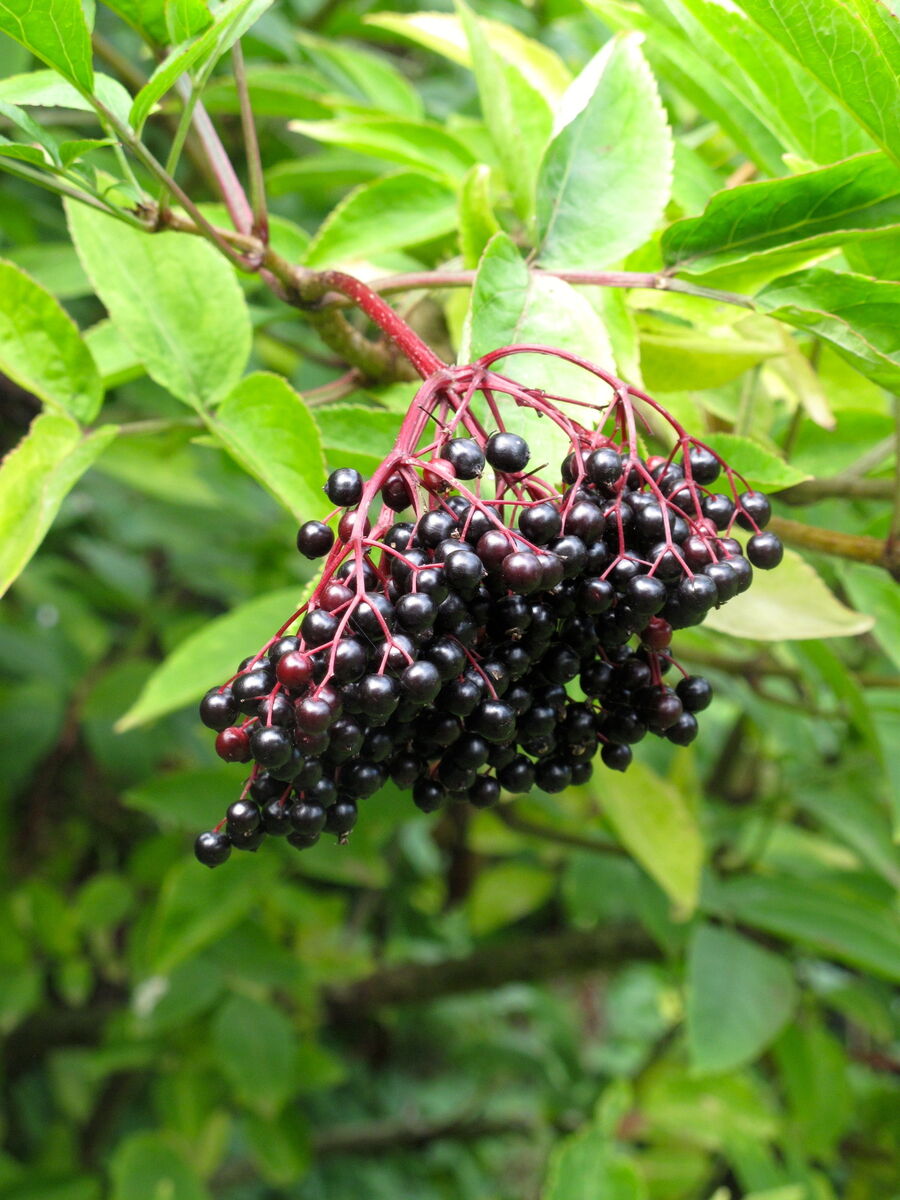
Deep dark clusters of juicy elderberries have long been a source of herbal medicine for humans, used to treat burns, piles, swellings and jaundice, among other things. Most of our hedgerow fruits are classed as edible, though most are too bitter or harsh for our 21st-century palates. In ancient times, from the Bronze Age through Viking times to the 19th Century, the fruit of sloes was mashed up into a pulp, then spread out thinly to dry, which concentrates the sugars and lessens the bitter taste. For millennia, chewy strips of fruit ‘leather’ would have provided valuable vitamins and sweet sustenance through the winter months. Most hedgerow fruits are rich in vitamin C as well as being a good natural source of antioxidants.
Blackberries are at their most generous these few weeks. Every other household in the country has been boiling up jams, brewing blackberry brandy, baking crumble, and feasting while the bounty lasts.
Through the spring and summer months, most birds need to eat insects to get enough protein for nesting and feeding young chicks. Now, as broods have fledged and autumn fruits are on offer, many songbirds switch to eating wild fruits. Great tits, blue tits, starlings, thrushes, robins and blackcaps all have a particular taste for elderberries. Blackbirds and song thrushes gobble up rowan berries. Soon, Fieldfares and Redwings arriving in from colder northern latitudes will be feasting on rowan berries too.
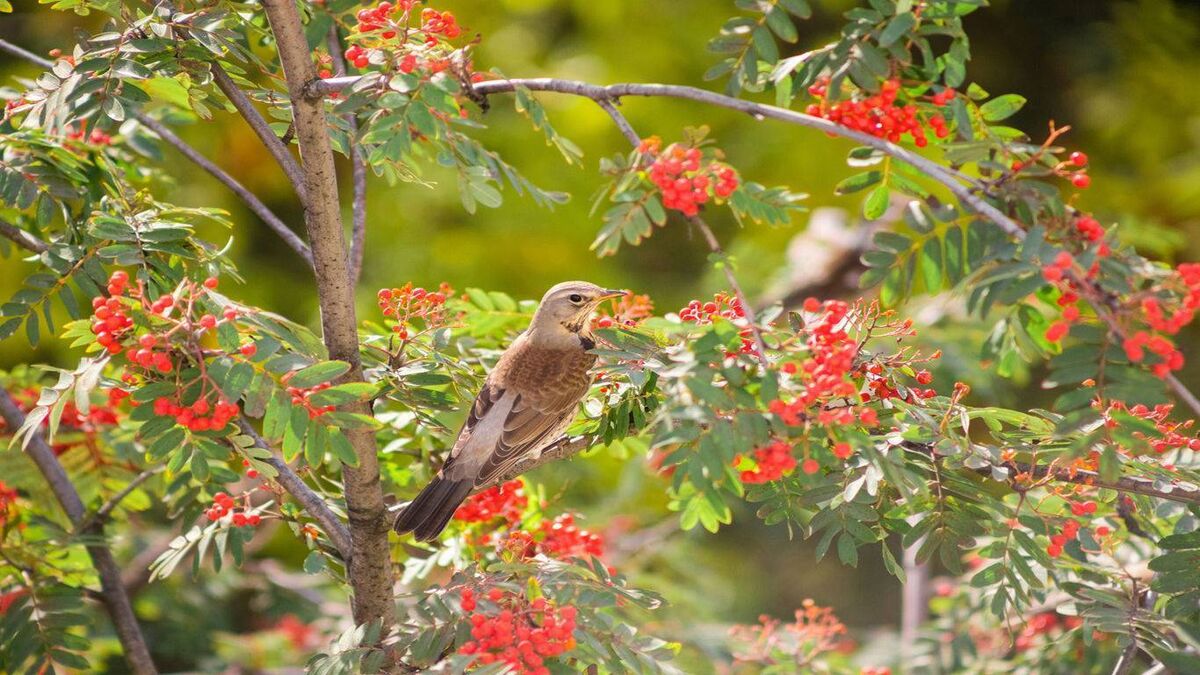
Waxwings, which come here for the winter from Scandinavia, seem to have a particular fondness for rowan berries, with dozens of birds flocking to a well-endowed tree to devour the fruit, eating up to three times their own bodyweight in berries every day! Waxwings are a stunning little bird with a velvety grey body, a bright yellow rim to their tail, scarlet red on their wings, and a punky plume on their handsome heads. These are exotic-looking birds worth looking out for at this time of year.
Many butterflies are still active in hedgerow habitats at this time of year too. Hairstreak butterflies lay their eggs on blackthorn bushes at this time of year. Their eggs will hatch out in spring, when the caterpillars who emerge are met with a ready supply of blackthorn leaves to eat.
From September 1, it is legally permitted to cut, trim and otherwise manage hedges again, but this does not mean that all hedges should be cut back in earnest. Trimming hedges maintains the density that is needed to keep them stock-proof and to maintain the thickness of the lower layers that are so important to nesting birds. Though it’s important to bear in mind that when hedges are cut back in autumn, the cut branches will take about four years before they bear fruit again. Trimming hedges on all sides, every year, will severely curtail the quantity of flowers and fruit. Care is needed to match the management needs for maintaining a good thick hedge in the long-term with minimising cutting so that much-needed wildlife habitats are protected too.
Without suitable management — such as occasional sidetrimming and ‘hedge laying’ — hedge shrubs can lose their dense lower growth. ‘Hedgelaying’ is a particular management practice for ‘rejuvenating’ old hedges that I will write more about next week. But at this time of year, with restrictions on cutting lifted, many hedges are flailed to within an inch of their lives, and blunt flails can be especially damaging. Cutting too hard, too often, too low, or at the wrong time of year will all weaken the hedge over time. Hedges that are cut too hard or too low not only have limited value in sheltering stock, but their value for wildlife is also compromised. Several studies have found that taller, wider, denser and structurally more intact hedgerows are preferred by most wildlife, including small woodland plants, invertebrates, and hedgerow birds. When hedges are trimmed this should be done so that the hedge is wider at the base, tapering to a narrow top, in what is called an A-shaped profile. This reduces self-shading and helps maintain a dense base to the hedge.
For anyone keen on feeding birds in the garden, native flowering and fruiting trees provide essential sustenance for so many species. This is a good time of year to think about planting new native hedges around your home, garden or farm. It’s also a good time to plan what to plant into gaps in existing hedges.
Saving seeds from wild hedgerow fruits at this time of year can be a wonderful way to engage the whole family and will help all involved to improve their tree identification skills!
Rowan, bird cherry, Guelder-rose, hawthorn and spindle all make beautiful additions to any garden, as well as surrounding areas where planting trees is a possibility. Each species has particular requirements for the seeds inside the berries to germinate. Fill pots or seed trays with leaf mould compost, preferably homemade, to make a suitable bed for sowing seeds. A little bit of online research will help you figure out exactly what to do. If you are successful in growing trees and shrubs from locally gathered seed, they can make for great gifts to friends and neighbours next year. Not only are the berries in autumn like a self-sustaining bird feeder, but native fruiting shrubs and trees provide year- round habitat to many moths and other critters too.






